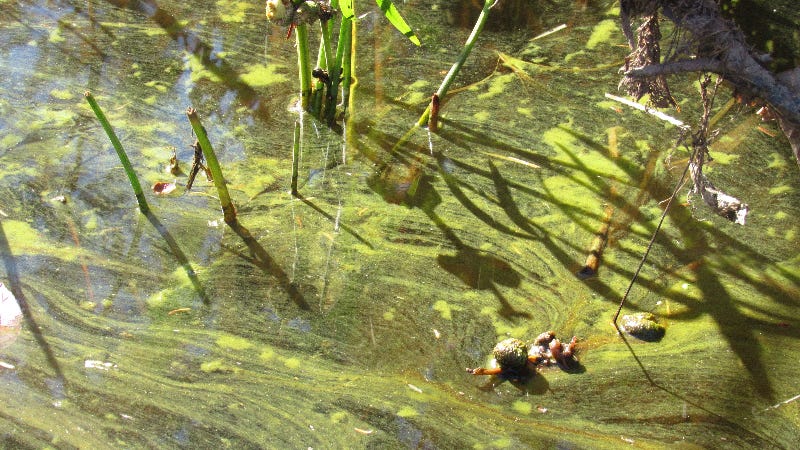Watch out for blue-green algae - province
Chief medical officer of health reminds public of risks associated with cyanobacteria
As temperatures rise with the impending arrival of summer, the New Brunswick government issued an alert to remind people of the danger posed to humans and animals by blue-green algae.
The departments of Health, and Environment and Local Government issued a news release Monday about the toxic nature of some forms of cyanobacteria, also known as blue-green algae.

Cyanobacteria, which collects along waterways and shorelines, emit toxins that can cause irritation to the skin, eyes and throat, and they can harm pets, fish, wildlife and livestock, the release said.
Ingesting the algae can also lead to stomach issues, it said.
“We want all residents to be active and enjoy the outdoors, but we also want them to understand and consider the potential risks of exposure to cyanobacteria,” Dr. Yves Léger, chief medical officer of health, said in the release.
“New Brunswickers are encouraged to familiarize themselves with the appearance of cyanobacteria blooms in order to minimize risks for themselves, their loved ones and pets.”
Surface blooms of cyanobacteria are usually blue-green, as the name suggests, but they can also appear green, red or brown, the release said.
Benthic mats of the algae can form at the bottom of lakes and rivers, it said, and they can resemble clumps of vegetation. They can appear black, brown or dark green in water, and when they dry and collect on shore, they can turn brown or grey, attaching to rocks or aquatic plants.
“Cyanobacteria blooms can be unpredictable, so it’s important to always check the water and scan the shoreline before entering, and avoid swimming in areas where there are visible blooms or mats,” Léger said in the release.
The province also urged people to supervise young children and pets near recreational waters, not to swallow lake or river water, to bathe or shower after water activities, not to enter waterways with open cuts or sores, and to wash hands before eating.
“Benthic mats, including those washed up on the shores of lakes and rivers, can be toxic and deadly to dogs if ingested,” the release said.
“Dogs are attracted to their scent and should not be allowed to eat shoreline vegetation or floating mats.”
People should also avoid handling these benthic mats while wading, fishing or boating, it said.
Environment and Climate Change Minister Gilles LePage said in the release that the province is funding research projects into cyanobacteria to expand our understanding of blue-green algae and its potential toxins.
The provincial government has more information on cyanobacteria on its website.
The Fredericton Independent can be reached by email here.



